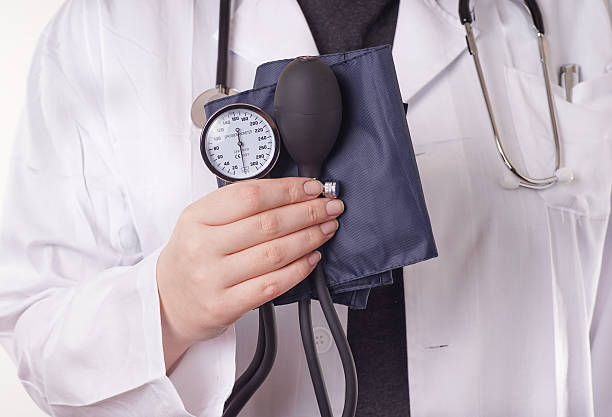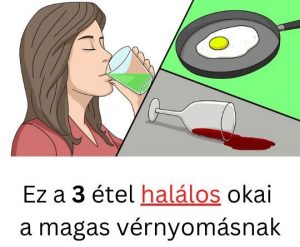The #1 Rated Blood Sugar Formula
Primary Hypertension (Formerly Known as Essential Hypertension)

Essential hypertension is high blood pressure that doesn't have a known secondary cause. It's also referred to as primary hypertension. Blood pressure is the force of blood against your artery walls as your heart pumps blood through your body.
What is primary hypertension?
Primary (essential) hypertension is high blood pressure that is multi-factorial and doesn’t have one distinct cause. It’s also known as idiopathic or essential hypertension. Above-normal blood pressure is typically anything over 120/80 mmHg. This means that the pressure inside your arteries is higher than it should be.Why should I be concerned about essential hypertension?
Essential hypertension (now known as primary hypertension) damages your blood vessels. The condition worsens over time and can cause life-changing complications that include:- Brain aneurysm.
- Dementia.
- Heart attack.
- Heart failure.
- Kidney disease.
- Malignant hypertension.
- Stroke.
- Vision loss.
SYMPTOMS AND CAUSES
What causes essential primary hypertension?
Unhealthy habits and certain circumstances put you at risk for essential primary hypertension. These include:- Being an older adult (age 65 and up).
- Diabetes.
- A diet that’s high in salt.
- Drinking too much coffee and other forms of caffeine.
- Family history of high blood pressure.
- Obesity.
- Alcohol use disorder.
- Sedentary lifestyle with limited physical activity.
- Sleep issues, such as insomnia.
How is primary hypertension different from other forms of hypertension?
Other types of hypertension have one distinct cause. These include a medical condition or side effects of medications. When there is a direct cause, it’s known as secondary hypertension. Primary and secondary hypertension can co-exist, particularly when there’s an acute worsening of blood pressure control, a new secondary cause should be considered. Conditions that can cause secondary hypertension include:- Adrenal disease.
- Kidney disease.
- Obstructive sleep apnea.
- Pheochromocytoma or paraganglioma.
- Pregnancy (preeclampsia).
- Thyroid disease.
- Medications such as NSAIDs.
What are the symptoms of essential hypertension (now known as primary hypertension)?
In the early stages, primary hypertension has no symptoms. Over time, blood vessel damage can start affecting your health. You may experience:- Blood in your urine (hematuria).
- Blurry vision.
- Chest pain and shortness of breath.
- Dizziness and lightheadedness.
- Fatigue.
- Mental fog.
- Nosebleed.
- Severe headaches.
DIAGNOSIS AND TESTS
How is primary hypertension diagnosed?
A diagnosis of primary hypertension is made when you have high blood pressure, but none of the conditions that cause secondary hypertension. The best way to know if you have it is by seeing a healthcare provider who will:- Review your medical history to rule out conditions that cause secondary hypertension.
- Perform a blood pressure check to determine whether you have high blood pressure.
What happens during a blood pressure check?
Healthcare providers use a device with an inflatable arm cuff and dial. They inflate the cuff and watch the dial while listening to the force of blood through a stethoscope. The test results in two readings:- Systolic pressure (top number) measures pressure when the arteries are full of blood.
- Diastolic pressure (bottom number) measures pressure when the heart is at rest between beats.
Will I need any other tests?
If there are multiple high blood pressure readings, your healthcare provider may recommend 24-hour ambulatory blood pressure monitoring. This test regularly measures blood pressure over 24 hours, even while you sleep. Healthcare providers take the average of these readings to confirm or rule out a diagnosis of hypertension.MANAGEMENT AND TREATMENT
What does primary hypertension treatment look like?
Primary hypertension treatment typically includes lifestyle changes and medications.Lifestyle changes
Maintaining a healthy lifestyle includes:- Adding regular exercise to your routine.
- Avoiding alcohol and recreational drugs.
- Eating a heart-healthy diet, including low sodium consumption.
- Maintaining good sleep habits.
- Quitting smoking if you use tobacco.
Medications
Various medications can lower your blood pressure, including:- Angiotensin-converting enzyme (ACE) inhibitors help the body produce less angiotensin, a protein that raises your blood pressure. Captopril tablets are one type of ACE inhibitor.
- Angiotensin II receptor blockers (ARBs) are medications that prevent blood vessel narrowing.
- Beta blockers slow your heart rate and reduce the heart's output, which lowers blood pressure. Metoprolol extended-release capsules are one type of beta blocker.
- Calcium channel blockers, like diltiazem tablets, decrease the amount of calcium in the blood vessels. This helps muscle tissue relax to relieve narrowing.
- Diuretics, such as furosemide tablets, help the body eliminate excess water and sodium.
- Vasodilators help muscles in blood vessel walls relax, making it easier for blood to flow through them.
PREVENTION
How can I prevent essential (primary) hypertension from worsening?
To prevent high blood pressure from worsening you can:- Follow all care instructions, such as taking medications in the precise dose at specific times each day.
- Ask your healthcare provider whether other medications you are taking may affect your blood pressure.
- Keep all follow-up appointments so your healthcare provider can determine whether treatments are meeting your needs.
- Stick to lifestyle changes, like quitting smoking and eating healthy.
OUTLOOK / PROGNOSIS
What is the outlook for people with primary hypertension?
Many people lower their blood pressure with medications and lifestyle changes. Some people come off blood pressure medications after maintaining a healthy lifestyle. A small number of people experience no change in blood pressure despite trying several medications (resistant hypertension).LIVING WITH
What’s important to know about living with primary hypertension?
Medications alone are not enough to lower your blood pressure. For the best results, you need to live a healthy lifestyle. It can be challenging to change what you eat and break old habits. Some people benefit from the help of health coaches, therapists or trusted friends. Setting realistic goals can help you make steady progress and feel your best. Key Takeaways Essential hypertension is high blood pressure that is not due to another medical condition. There can be many causes, including obesity, family history and an unhealthy diet. Even though the condition does not cause symptoms, it’s critical to manage it. Essential hypertension can lead to blood vessel damage, putting you at risk for life-threatening complications. With successful treatment, you can lower your blood pressure and preserve your health for years to come.Frequently Asked Questions:
High blood pressure that doesn't have a known cause is called essential or primary hypertension.In contrast, secondary hypertension has a known cause.
The difference between primary hypertension and secondary hypertension is the causes related to each. Primary hypertension does not have a definitive cause, while secondary hypertension has a known cause. Both primary and secondary hypertension result in high blood pressure.
essential hypertensionHow is essential hypertension diagnosedmanagement and treatment of primary hypertensionPrimary Hypertensionprimary hypertension causesprimary hypertension treatmentrisk factors associated with essential hypertensionsymptoms of essential hypertensionTreatment for essential hypertension






